High Level Isolation Room Interactive Tool
Patient Room Overview
Utilize this Interactive Tool to learn more about our consensus statements for physical infrastructure for High-Level Isolation care. Highlights in the tool below will populate with our consensus statements and different strategies to implement the statement.
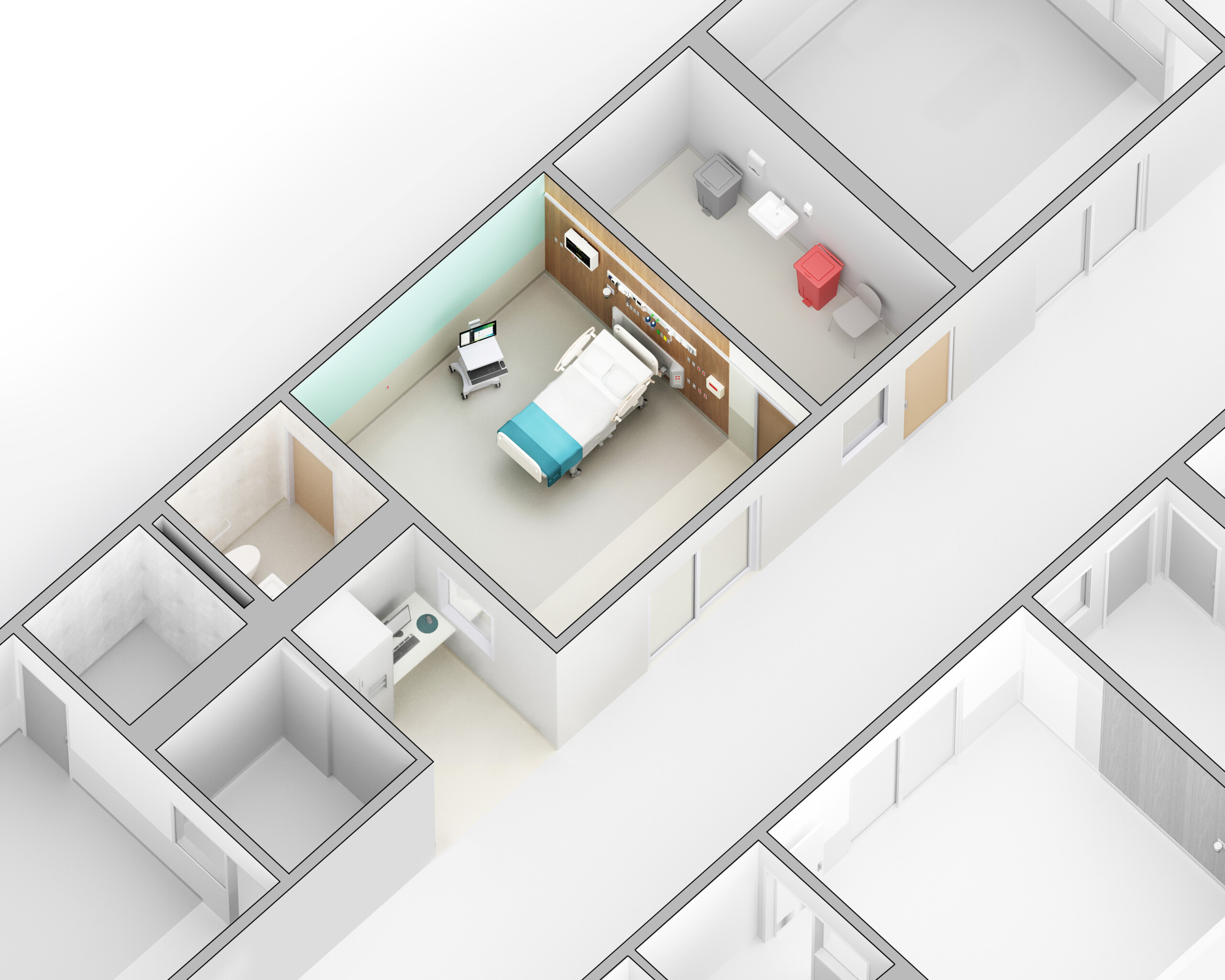
All Features

Patient Room and Unit
High-Consequence Infectious Disease (HCID) Patient Room Location
Consensus Statement:
The facility should identify, evaluate, and designate locations that can be maintained during ongoing hospital operations, and which have the appropriate environments in place for isolation of patients under investigation (PUI) for high-consequence infectious disease (HCID) during their transport and care. Possible options include within or near the Emergency Department, Observation Unit, or Intensive Care Unit (ICU).
Model as an Observation Unit
Consensus Statement:
Model an HCID patient care unit after an observation unit. The unit should have the following minimum elements in place, based on Facility Guidelines Institute (FGI) 2022 Hospital Guidelines sections 2.2-3.3:
*A nurse station that allows observation of the patient room entry
*A nourishment area in or readily accessible to the unit
*An equipment and supply storage area for gurneys, supplies, and emergency equipment
*A nurse or supervisor workspace
*A medication safety zone
*A clean workroom or clean supply room
*A soiled workroom or soiled holding room
*An environmental services room
*A patient care room, preferably with natural light
*Easily accessible picture archiving and communication system (PACS) and/or X-ray illuminators
*A staff toilet room either in or adjacent to the unit
*A staff lounge on the same floor as the unit
Implementation Strategies:
- Pre- and Post-operative care areas have similar elements; consider these as alternate potential locations. ($)
- Consider using existing wings or hallways of floors that can easily be sectioned off. ($)
Existing Standards and Other Useful References:
FGI 2022, Guidelines for Design and Construction, Hospital Guidelines sections 2.2-3.3
Unit Location
Consensus Statement:
If the HCID patient rooms are located within a larger unit, they should be located at one end of the unit, close to an entry or exit door, and have restricted access. If possible, provide a means to maintain physical separation from other patient care areas.
Implementation Strategies:
- Indicate separation visually with distinctive floor and/or wall paint color; and/or digital or paper signage. ($)
- Install temporary partitions to separate a distinct area, if compliant with life safety requirements. Ensure there is space for adequate storage of clean PPE. ($$)
- Establish workflow plans for entering/exiting the designated space and communication to ensure only those with training enter it.
Patient Room Dimensions
Consensus Statement:
To be adequate to provide the broadest level of care in the room and to avoid transporting patients within the facility, the HCID patient care room should have a minimum clear floor area of 140 square feet, with a minimum clear dimension of 10 feet (similar to that of an ED Observation Room). Room size should permit a minimum clearance of 4 feet at each side and at the foot of the gurney or bed for clinical care.
Implementation Strategies:
- If available existing space is smaller, consider removing any fixed cabinetry and replacing it with mobile storage or work surfaces to increase flexibility of clinical workspace around the patient. Test the space’s functionality with a mockup and simulation of care for an HCID patient. ($)
- Enclose two open bays to create appropriate enclosure for room size requirements. The enclosure should be constructed to meet pressurization requirements of Air Handling Statement #1. ($$)
Existing Standards and Other Useful References:
FGI 2022, Guidelines for Design and Construction, sections 2.1-3.2.2.1 (modified per above)
Definition of Terms:
Medication Safety Zone – A critical area for medication management where medications are prescribed; where orders are entered into a computer or transcribed onto paper documents; and where medications are prepared, dispensed, or administered (United States Pharmacopeia (USP), 2010).
Clear Floor Area – Floor area which is unobstructed by any permanent fixture.
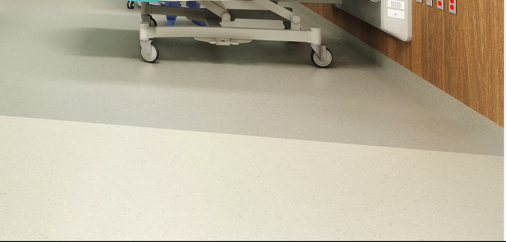
Patient Room Finishes
Consensus Statement:
Finishes in HCID patient rooms should include:
- Flooring: cleanable and wear-resistant; stable, firm, and slip-resistant
- Floor and wall base assemblies: monolithic floor with integral covered wall base carried up the wall a minimum of 6 inches
- Wall/Doors & window finishes: cleanable; free of fissures, open joints, or crevices
- Ceiling: monolithic, able to be scrubbed, able to be cleaned and disinfected, with gasketed access openings
Implementation Strategies:
- Replace non-monolithic floors with sheet vinyl ($), sheet rubber flooring ($$), or poured flooring ($$$).
- Replace lay-in ceiling with a durable, gasketed tile that can be scrubbed ($) or with drywall ceiling with durable paint that can be scrubbed. ($$$)
Existing Standards and Other Useful References:
FGI 2022, Guidelines for Design and Construction, section 2.1-7
Definition of Terms:
Monolithic – A surface that is free of seams, fissures, cracks or crevices.
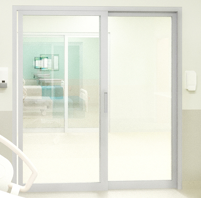
Patient Room Doors & Windows
Door Closure Mechanism
Consensus Statement:
The doors for HCID patient care rooms should be self-closing and latching with no hold opens.
Implementation Strategies:
- Retrofit the existing door to add a self-closing mechanism.
Door Dimensions
Consensus Statement:
The door to the patient care room should be a sliding breakaway door with a minimum width of 36-inches. Alternatively, if sliding doors are not feasible, ideally provide a 44.5-inch clear door width as a minimum.
Existing Standards and Other Useful References:
FGI 2022, Guidelines for Design and Construction, section 2.1-7.2.2.3(2)a
Sliding Doors
Consensus Statement:
To optimize space and for greater visibility, where feasible, use appropriately sealed or gasketed glass sliding doors rather than swing doors for HCID patient care rooms.
Implementation Strategies:
- If sliding doors are not possible, provide a swinging door with a window and integral blinds. ($) Consider installing a pair of swinging doors. ($$) Doors should have closers and edge seals to maintain pressurization requirements.
- If possible, provide hands-free automatic door openers on both sides of the door to minimize opportunities for touch. ($$$)
Seal for Pressurization
Consensus Statement:
Ensure that seals maintain adequate pressurization in the HCID patient care room.
Touch-Free Door Mechanism
Consensus Statement:
Where feasible, provide a touch-free mechanism to open the HCID patient care room.
Implementation Strategies:
- If hands-free automatic door opener is not possible, consider providing door hardware that can be opened without using hands (e.g. a 4-5’ long pull bar, mounted vertically, that one can open using an elbow or a foot; or a pull that can be operated using a part of the arm, other than one’s hands). ($)
- Install a hands-free automatic door opener. ($$)
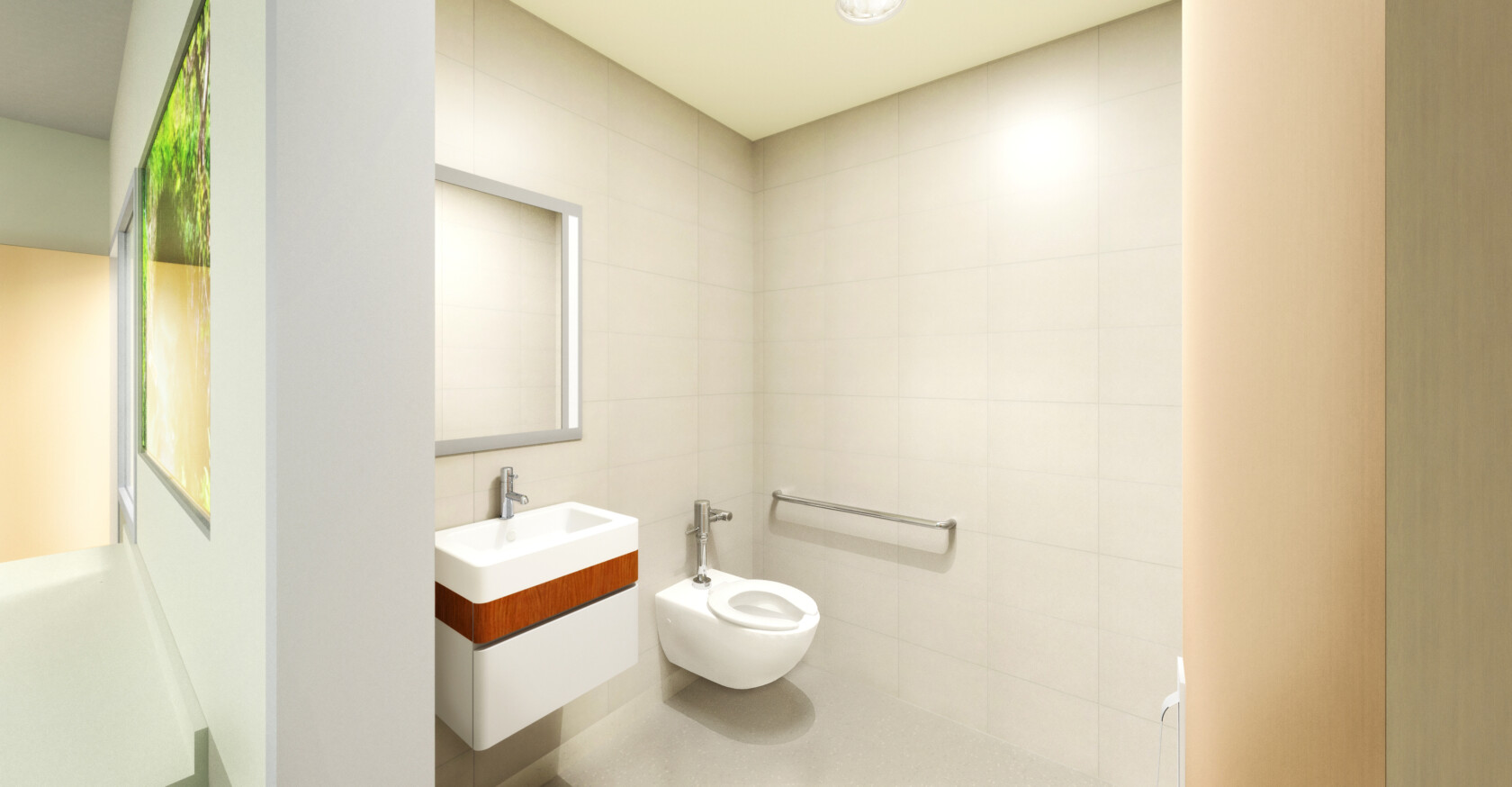
Patient Toilet Room
Consensus Statement:
HCID patient rooms should have an adjoining, dedicated patient toilet room that can be entered without going into the general corridor. The toilet room should be equipped with a toilet, hand-washing station, and nurse call button. The door of the toilet room should swing out into the patient room to allow rescue of a patient who may have collapsed. Alternatively, equip the patient room with a commode and a privacy screen.
Implementation Strategies:
- Select a patient room for HCID designation that is adjacent to a toilet room entered from the corridor. Add a door from the patient room directly to the toilet room. ($)
- Add a hospital toilet cabinet to the room if there is sufficient space. ($$)
Existing Standards and Other Useful References:
FGI 2022, Guidelines for Design and Construction, section 2.1-2.4.2.2 (Airborne Infection Isolation Room requirements)

Air Handling
Pressure Differentials
Consensus Statement:
Airflow and air pressure relationships must be directional across areas in accordance with ANSI/ASHRAE/ASHE 170 requirements or the governing standards for airborne infection isolation rooms. If facilities consider exceeding the minimum pressure differential, this should be evaluated in conjunction with subject matter experts.
a. The pressure differential between an occupied HCID patient room and adjoining rooms (including anterooms if applicable) should remain negative with > -2.5 Pa (0.01” water gauge) differential.
b. The pressure differential between an occupied HCID patient room and the hallway should remain negative with > -2.5 Pa (0.01” water gauge) differential.
Implementation Strategies:
- Use an existing Airborne Infection Isolation Room to create an HCID room. ($)
- Modify an existing room to achieve temporary negative pressurization according to ASHE recommendations (see reference below). ($$)
Existing Standards and Other Useful References:
This link provides options for creating negative pressure and modifying air changes as needed.
Air Changes Per Hour
Consensus Statement:
Designated HCID patient rooms should have a minimum of 12 air changes per hour (ACH).
Implementation Strategies:
- Use an existing Airborne Infection Isolation Room with 12 ACH. ($)
- Modify an existing room to achieve minimum ACH, according to ASHE recommendations (see references below). ($$)
Existing Standards and Other Useful References:
This link provides options for creating negative pressure and modifying air changes as needed.
This link demonstrates how to measure air changes per hour.
Fan Redundancy
Consensus Statement:
While existing minimum standards (ANSI/ASHRAE/ASHE 170) does not require redundant fan systems for either the supply of exhaust or any system, HVAC system redundancy, when possible, may be considered, and if desired, evaluated in conjunction with subject matter experts.
Implementation Strategies:
- For exhaust, install a secondary redundant exhaust system for the HCID patient room. For supply, use a multi-fan wall system in the air handling unit system serving the HCID patient room. Engage with a subject matter expert consultant.
Existing Standards and Other Useful References:
ANSI/ASHRAE/ASHE Standard 170 (2021): Ventilation of Health Care Facilities
HEPA Filter – Bag-In/Bag-Out System
Consensus Statement:
HEPA filter maintenance and changes should adhere to bag-in/bag-out procedures.
Implementation Strategies:
- Follow the manufacturer’s recommendations and hospital policy for filter removal and disposal practices.
- Follow CDC and public health recommendations for filter removal and disposal practices, based on the pathogen of concern.
Local Monitor Placement and Alarms
Consensus Statement:
Air pressure monitors are mounted locally, visible to staff, and equipped with audible alarms.
Implementation Strategies:
- Use an existing Airborne Infection Isolation Room to create an HCID room with a local air pressure monitoring system. ($)
- Create an HCID room from an existing patient room with a local air pressure monitoring system. ($$)
- Create an HCID room from an existing hospital patient care area with a local air pressure monitoring system. ($$$)
- Create an HCID room from an existing non-patient care area with a local air pressure monitoring system. ($$$$)
Definition of Terms:
Bag-in Bag-out – A filter system that by design permits removal of the used air filters into a built in, heavy-duty disposal bag to minimize exposure to maintenance personnel.
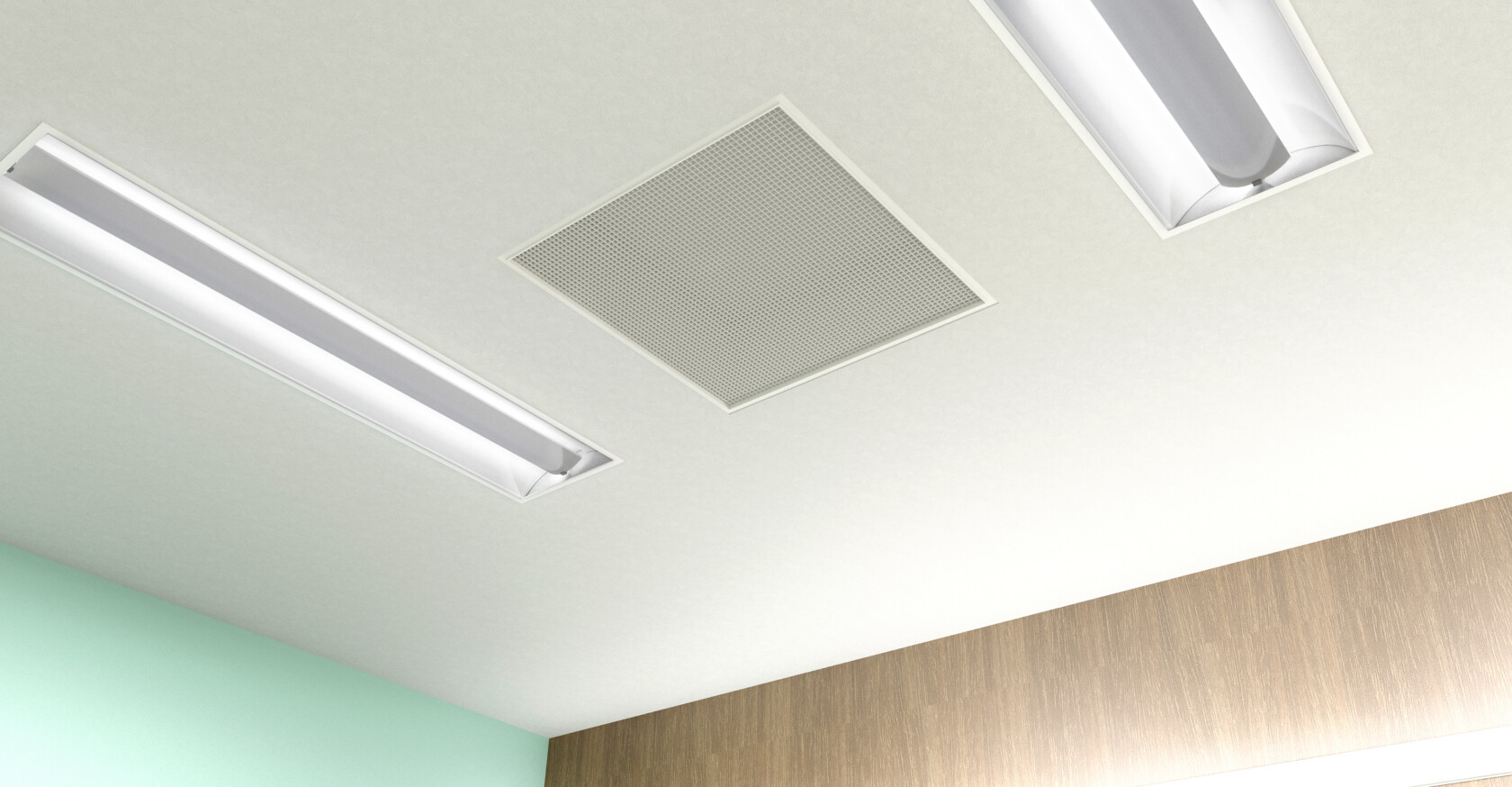
Exhaust to Outside and Exhaust Grille Placement
Exhaust Air to Outside
Consensus Statement:
Exhaust air should be vented 100% to the outside of the building. All HVAC system intakes and exhausts should be located at least 25 feet from public ways or public access points, according to ASHRAE/ASHE 170 (2021) Table 6-1. Air Intake Minimum Separation Distance. If there is any possible risk of re-entry of exhaust air, or risk of human exposure to exhausted air, HEPA filtration of exhausted air is required. If recirculating systems are used, recirculated air when utilized must be HEPA filtered.
Implementation Strategies:
- Use an existing Airborne Infection Isolation Room. ($)
- Modify an existing room to achieve HEPA exhaust to outside, according to ASHE recommendations (see reference below). ($$)
Existing Standards and Other Useful Resources:
ANSI/ASHRAE/ASHE Standard 170 (2021): Ventilation of Health Care Facilities, Table 6-1. Air Intake Minimum Separation Distance
Exhaust Grille Placement
Consensus Statement:
Positioning of exhaust grilles as close to the source (patient) as possible serves to reduce the concentration of infectious particles present. Thus, when possible, consider placement of exhaust grilles over the head of the bed or on the wall near the head of the bed, although with patient movement in the room the impact of this positioning is reduced.
Implementation Strategies:
- Relocate existing grilles to ensure the exhaust grille is over the patient by extension of a flex duct within the existing HVAC ductwork system. ($)
- Reconfigure the existing HVAC ductwork system to locate an exhaust grille above the patient. ($$)
- Install an additional exhaust grille to provide exhaust above the patient. ($$$)
Existing Standards and Other Useful Resources:
ANSI/ASHRAE/ASHE Standard 170 (2021): Ventilation of Health Care Facilities
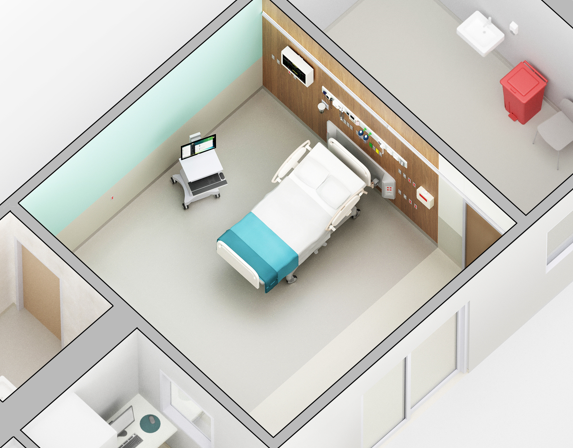
Doffing Area in Patient Care Room
Consensus Statement:
If it is not possible to provide a physically separate area for doffing of personal protective equipment, the HCID patient room should have an additional, designated/delineated zone within the room at the exit door for this purpose. This space should be a minimum of 6 feet 6 six inches by 6 feet 6 inches and delineated with a visual cue (e.g. different color floor finish, floor decals, etc.).
Implementation Strategies:
- Install a prefabricated portable anteroom outside of the designated HCID patient room. It is necessary to maintain life safety compliance (e.g. cannot interfere with required corridor width or existing requirements). ($)
- Use an available room adjacent to the designated HCID patient care room for doffing. Add a door between the patient room to the adjacent room. See Air Handling statements regarding pressurization requirements. Room should have easily cleanable finishes and be equipped with a trash receptacle and hand sanitizer, at a minimum. ($$)
Existing Standards and Other Useful References:
FGI 2022, Guidelines for Design and Construction, sections 2.1-2.4.2.3

Doffing, Soiled Utility, and Biohazardous Waste
Designated PPE Doffing Room
There should be a physically separated space for doffing of PPE. The physical space should have a minimum clear floor area of 6 feet 6 inches by 6 feet 6 inches so that healthcare personnel can doff without touching any adjacent wall, door, or furniture. Provide a means for a healthcare personnel to have clear visual access to and communication with staff in the doffing space. The doffing area should be equipped with a sink, biohazard waste receptacle, and alcohol-based hand rub.
Implementation Strategies:
- If there is no window to the doffing space, consider mounting a video camera or tablet on wheels so that a remote staff member can monitor the doffing process and offer verbal instruction when necessary. ($)
- Install a new door with a window or install a window for the door of the doffing space. ($$)
Access to Soiled Utility Room
Consensus Statement:
The HCID care area should include a soiled work or utility room that is in close proximity to the patient room. The room should:
- Have sufficient space for large, fully enclosed, biohazardous waste containers and decontamination supplies.
- Have access control capabilities for when the area is utilized in the care of an HCID patient.
Implementation Strategies:
- Use existing designated space for soiled work or utility rooms for biohazard waste storage. ($)
- If existing space is insufficient, repurpose a sufficiently large room within the care area for a soiled work or utility room. The space should have alcohol-based hand rub at a minimum for hand hygiene. The space would need to meet minimum air flow and pressurization specifications. ($$)
- Use the existing locking method to control access to the soiled utility room. ($)
- Install access control capability for the soiled work or holding room. ($$)
Existing Standards and Other Useful Resources:
FGI 2022, Guidelines for Design and Construction, Hospital Guidelines, Section 2.1-2.8.12 (Soiled workroom and soiled holding room)
Waste Holding Room Pressurization
Consensus Statement:
The in-unit waste holding room requires negative pressure relative to adjacent areas with all room air exhausted directly to the outdoors.
Existing Standards and Other Useful Resources:
ANSI/ASHRAE/ASHE Standard 170 (2021): Ventilation of Health Care Facilities, Table 7.1
Temporary Biohazardous Waste Storage
Consensus Statement:
Provide a space for temporary storage of biohazardous waste, specifically to support the HCID unit (not shared with other regulated medical waste). The space must be: secured with access limited to those trained in handling this waste; temperature and pest controlled; flood safe. Ideally, this storage is adjacent to the loading dock or drive where the material can be removed from.
Implementation Strategies:
- Obtain a secure, enclosed, dedicated dumpster for this waste. ($)
- Repurpose flood-safe space close to the location where biohazardous space is treated or picked up for hauling that can be secured. Temperature and pest control features may need to be added. ($$)
Definition of Terms:
Healthcare Personnel – All paid and unpaid persons serving in healthcare settings who have the potential for direct or indirect exposure to patients or infectious materials, including body substances (e.g., blood, tissue, and specific body fluids); contaminated medical supplies, devices, and equipment; contaminated environmental surfaces; or contaminated air. HCP include, but are not limited to, emergency medical service personnel, nurses, nursing assistants, home healthcare personnel, physicians, technicians, therapists, phlebotomists, pharmacists, dental healthcare personnel, students and trainees, contractual staff not employed by the healthcare facility, and persons not directly involved in patient care, but who could be exposed to infectious agents that can be transmitted in the healthcare setting (e.g., clerical, dietary, environmental services, laundry, security, engineering and facilities management, administrative, billing, and volunteer personnel).

Unidirectional Flow
Consensus Statement:
Ensure the HCID unit is able to support unidirectional flow of staff and supplies/equipment from the clean area, into the patient room, into a space designated for the doffing of personal protective equipment (PPE) and then back into a clean area. Clearly delineate the separation between these areas.
Implementation Strategies:
- Ideally, the HCID unit would be made up of three connected spaces: a donning area outside of the room, a patient room with its attached toilet room, and a doffing area. If not possible, designate these areas within the space available, using flooring differentiation, wall paint color, wall signage, or at a minimum, floor color.
- After establishing a designated workflow of staff supplies, and equipment, place a visual tool to educate staff within the room to ensure awareness and compliance with unidirectional flow.

Emergency Shower
Consensus Statement:
A shower in close proximity to the patient care area should be made available and designated for the use of HCPs supporting the HCID response in the event of a PPE breach. Ideally, showers will also be made available to staff for comfort following doffing and/or prior to the end of their shift.
Implementation Strategies:
- Use existing infrastructure, select a unit or location for HCID care that has a staff shower. ($)
- When there is a patient requiring HCID care, take an adjacent patient room out of service that has a shower and dedicate it for HCID caregiver use. ($)
- Install a portable shower readily accessible to the HCID patient room. ($$)
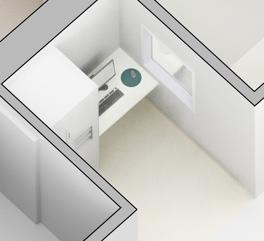
Central Monitoring and Management and HVAC Controls
Central Monitoring and Management
Consensus Statement:
In addition to local visual detection of air pressure, air pressure monitors are observed and managed in a centralized location.
Implementation Strategies:
- Provide a dedicated air pressure differential monitoring system that reports locally (within patient care unit) to an observed and managed centralized location (e.g. nursing station). ($)
- Provide a dedicated air pressure differential monitoring system that reports through the existing building automation system. ($)
- Provide a dedicated independent air pressure differential monitoring system for the HCID patient rooms that reports to an observed and managed centralized location (e.g. private branch exchange (PBX) station, which is a telecommunication console used for communication). ($$)
HVAC Controls
Consensus Statement:
HCID patient rooms should have dedicated and independent HVAC controls. The HVAC system and controls should be served by the essential systems branch. Access to serviceable portions should not require access to the patient room.
Implementation Strategies:
- Provide dedicated controls that report through existing building automation systems. ($)
- Provide a dedicated independent HVAC control system for the HCID patient room. ($$)